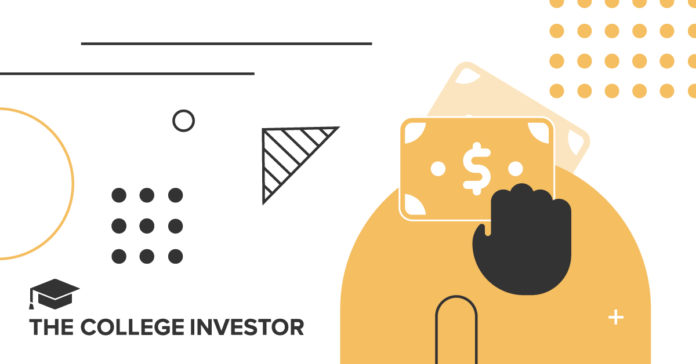- There is a lot of confusion around what payments and periods count for PSLF and PSLF buyback.
- The PSLF Buyback program offers a chance to retroactively count certain ineligible months by making a lump-sum payment.
- Only borrowers who are close to reaching forgiveness and meet strict criteria are eligible to use the buyback option.
After years of payments, pauses, and paperwork, many public service workers are confused on what payments and time periods may count for Public Service Loan Forgiveness (PSLF).
However, there are also more options to have qualifying periods count – thanks to the PSLF buyback program.
If you’ve been stuck in the SAVE forbearance, served in the military, or paused your payments for economic hardship, you might be closer to loan forgiveness than you think.
But there’s a catch: the buyback program is only available to borrowers who are already near the finish line.
It also raises a question: if you’re just a handful of months away from forgiveness and in forbearance, should you apply for buyback? Or wait and risk getting stuck? Or switch repayment plans and start making payments again?

What Counts As An Eligible PSLF Payment?
First, let’s talk about the main way to get a qualifying PSLF payment: making eligible payments.
So, what counts as an eligible PSLF payment. You have to meet three criteria:
- Have A Direct Student Loan
- Be On An Eligible Repayment Plan (Standard 10-Year, IBR, ICR, PAYE, SAVE)
- Certify Your Eligible Qualifying Employment
Each of your 120 payments counts individually – so each one has to meet those three criteria. It’s important to note that a $0 income-driven repayment plan payment counts.
One of the biggest issues borrowers face is not certifying all their months of employment. You can certify and get monthly payments to count retroactively. So, if you missed a time period, go back and get it certified.
What Is Qualifying Employment?
Qualifying employment encompasses working full-time for U.S. federal, state, local, county or tribal government, or a non-profit 501(c)(3) organization. U.S. military service qualifies and full-time AmeriCorps or Peace Corps volunteer service also qualify.
Working for for-profit organizations or government contractors (where the borrower is not directly employed by the government agency), labor unions and partisan political organizations does not qualify.
Eligible Deferments And Forbearances
Originally, deferments and forbearances did not count toward the 120 qualifying payments required for PSLF. For example, the economic hardship deferment counted toward the 20- or 25-year forgiveness in an income-driven repayment plan, but not PSLF.
That changed with the publication of new regulations on November 1, 2022, which expanded the set of qualifying periods. After these changes, the regulations at 34 CFR 685.219(c)(2)(v) specified that certain deferments and forbearances count toward PSLF if they occurred while the borrower was working full-time for a qualifying employer. These deferments and forbearances include:
- Cancer treatment deferment
- Economic hardship deferment
- AmeriCorps forbearance
- Mandatory administrative forbearances provided for collecting supporting documentation
- Certain deferments and forbearances related to service in the U.S. Armed Forces, including the military service deferment, post-active-duty student deferment, the U.S. Department of Defense Student Loan Repayment Program forbearance, the National Guard Duty forbearance and certain administrative forbearances related to local or national emergencies or military mobilizations
Payments that were suspended during the pandemic’s student loan payment pause and interest waiver from March 2020 to September 2023 count as qualifying payments if the borrower was otherwise working full-time in qualifying employment.
The payment count adjustment made additional deferments and forbearances eligible, including:
- All deferments prior to 2013, except for in-school and grace periods
- Starting in 2013, all of the deferments listed above
- Adjustments due to alleged forbearance steering, such as 12 or more consecutive months of forbearance and 36 or more cumulative months of forbearance
Other deferments and forbearances will qualify for the PSLF Buyback program if the borrower was working full-time in qualifying employment at the time.
PSLF Buyback Program
The PSLF Buyback program allows borrowers to make retroactive payments for specific ineligible deferment or forbearance periods where they had qualifying employment, enabling them to reach the 120 qualifying payment threshold. (34 CFR 685.219(g)(6))
This can include general forbearances that did not qualify for the payment count adjustment as well as the unemployment deferment.
There are several requirements for the PSLF Buyback Program:
- Qualifying Employment: The borrower must have worked full-time in qualifying employment during the buyback months.
- Employment Certification: If the employment during the buyback months was not previously certified as qualifying employment, the borrower must use the PSLF Help Tool to obtain employment certification.
- Proximity to Forgiveness: The PSLF Buyback option is available only to borrowers who, by using it, will reach the 120 qualifying payment requirement for PSLF or Temporary Expanded PSLF (TEPSLF), and thereby qualify for forgiveness. It’s intended for those close to the finish line.
- Payment Due Periods: Only months during which a payment was due can be bought back. This excludes the in-school and grace periods, and times when a bankruptcy proceeding was pending.
- Payment Amount: The borrower must make a lump-sum payment equal to at least what their monthly payments would have been under a qualifying repayment plan at the time of the qualifying employment.
It’s important to note that the buyback amount is processed manually based on what the payment would have been if it had not been paused.
Which Loans are Eligible?
Qualifying payments must have been made on or after October 1, 2007 on eligible Federal Direct Loans.
Federal Family Education Loan (FFEL) loans, Federal Perkins Loans, and private student loans are not eligible. However, FFEL loans and Perkins loans can become eligible if consolidated into a Federal Direct Consolidation Loan.
Federal Parent PLUS loans are eligible for PSLF but not TEPSLF, under Standard 10-year Repayment or an income-driven repayment plan. Federal Parent PLUS loans are not directly eligible for an income-driven repayment plan, but may become eligible for ICR if included in a Federal Direct Consolidation Loan.
Limitations of the PSLF Buyback Program
It is important to understand the limitations on the PSLF Buyback Program:
- Qualifying Employment is Mandatory: Borrowers cannot buy back months for which they did not have qualifying employment. And it must already be certified by the time of buyback.
- Ten-Year Employment Requirement: Borrowers must have worked in qualifying employment for at least the equivalent of ten years (120 months).
- 90-Day Payment Deadline: The required lump-sum payment must be made within a strict 90-day deadline after the buyback is approved.
Who Benefits Most From PSLF Buyback?
The PSLF Buyback Program is most beneficial for borrowers who are already very close to reaching 120 qualifying payments and have a few months of ineligible deferment or forbearance holding them back.
They are typically eager to achieve forgiveness quickly. They may fear that their eligibility for PSLF may be repealed.
Some borrowers may also find it financially advantageous if their income was lower during the period they are buying back. The lump-sum payment is based on their past income, potentially resulting in a lower cost compared to current IDR payments if their income has significantly increased.
Additionally, borrowers who were in certain forbearance statuses, like the interest-free forbearance under the SAVE plan since July 2024, might find the buyback option useful for prior ineligible periods. This lets them catch up during periods when they were unable to switch into a different income-driven repayment plan.
Note that the lump-sum payment is capped at the amount needed to reach the 120 qualifying payments, preventing borrowers from strategically buying back lower-cost months to seek a refund on previously made higher-cost, qualifying payments.
Don’t Miss These Other Stories:
Can President Trump Reverse Student Loan Forgiveness?
Can Trump Block Certain Workers From PSLF?
Best Student Loan Relief Options For Teachers
Create your very own Auto Publish News/Blog Site and Earn Passive Income in Just 4 Easy Steps







